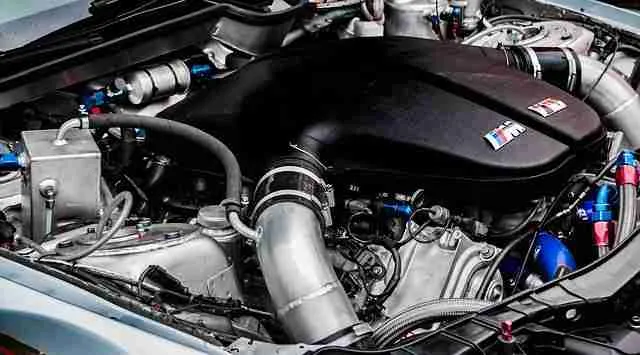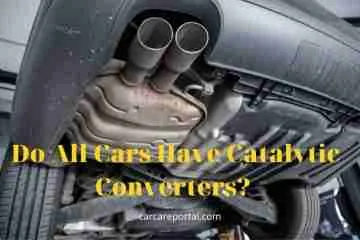How to Maintain a Car Engine

Knowing how to maintain a car engine is very vital. Those adventurous explorations around the city or off-road topographies in your German, Japanese, Chinese, or U.S machine wouldn’t spark the moments of joy you relish if your car engine is unhealthy.
As the central nervous system of your car, the engine’s health is fundamental, and keeping it fit is your utmost responsibility. Car engines need regular and timely maintenance to stay in prime operating condition. Setting and keenly adhering to a smart maintenance schedule would go a long way in making your rides smooth.
Wondering how to maintain a car engine? Pro mechanics and car maniacs recommend these engine maintenance tips for keeping vehicle performance optimal and enhancing your car’s life cycle.
Check and Replace Oil Regularly
Humans need blood for proper body parts lubrication while engines need oil. The many rotating and moving parts in your car engine would quickly wear off and develop issues if not lubricated. Car engine oil goes around a constant cycle, lubricating all parts.
The continuous use often leads to degradation of the oil, increasing the lubrication levels, mechanical wear, and leading to the development of carbon sludge and deposits.
If not resolved promptly, the issue will amplify, affecting the overall car driveability and performance. You well know changing oil often is cheaper than changing other damaged car parts. The standard oil change schedule for modern cars is 5000 miles or 4 months.
More advanced and featureful engines may take longer, but under all circumstances, it’s wise to change the oil after 4 months.
The idea here is to protect your car engine, so check the manufacturer’s suggestion on the oil change intervals. Those who have misplaced their vehicle manuals can do quick online searches for more detailed suggestions.
How to Maintain a Car Engine – Keep Your Car’s Cooling System Optimally Working
Keeping your car’s engine in optimal working condition also requires checking and maintaining the cooling system. Your car’s cooling system comprises components such as a coolant, radiator, water pump, and thermostat. In ensuring your car engine doesn’t overheat, you’ve to keep the radiator fluid at the peak for proper circulation through the engine.
The car engine coolant circulates through the engine when the thermostat detects overheating issues and notifies the system to cool it down. The water pump pulls the radiator fluid from the radiator and then pushes it towards the engine block, after which it returns to the radiator.
To determine the level of coolant in your engine, you would need to lift your car hood and check the coolant tank. Modern car’s coolant tank has orange or green-colored liquid. You must ensure the coolant doesn’t exceed the maximum mark and is way above the minimum mark.
It is less likely the engine will overheat unless there is another bigger and more troublesome mechanical issue, which would need a professional attendance.
Change Your Spark Plugs Regularly
Your car engine plugs should be changed often, as well. Many car manufacturers require you to change the spark plugs after every 64,000 kilometers moved to optimize engine performance and enhance fuel mileage. The lifespan of spark plugs in most modern cars is incredibly long, as it would sometimes hit the 160,000 kilometers mark.
For cars that aren’t well-equipped, you would need to change the spark plugs after every 50,000 kilometers moved. The cost of spark plugs is affordable, but if left unchanged for long, they could trigger more severe issues.
When changing spark plugs, you would need to change the spark plug wires, as well. Spark plug wires have an estimated lifespan of 80,000 kilometers. Don’t leave the wires unchanged for long since damaged wires could damage your spark plugs.
How to Maintain a Car Engine – Regularly Change the Fuel Filters
Fuel filters have a fundamental role in protecting the engine against harmful particles and sediments commonly found in the gas. They work to trap the debris and particles that could harm the engine if stuck in the canister for long.
Don’t allow your fuel filters to sit there for long unless you want to fault the engine and pay more to get it repaired or replaced. The complexity of the repair work will depend on how hard the filters are to reach. Cars with filters installed deeper into the engine’s interior would require the professional hand of qualified mechanics to replace them.
New and fresh fuel will ensure gas seamlessly and smoothly flows into the engine, reducing issues with build-ups and making it more powerful and durable.
Check and Replace the Timing and Driving Belts
Timing belts streamline the work of the engine’s camshaft in ensuring the valves simultaneously open and close with the pistons. Faulty or old timing belts snap when the engine is operating, causing costly damages to the engine.
That’s exactly why you should evaluate the timing belts often, ensuring no signs of wear and tear and oil isn’t soaked in the engine. Make sure timing belts are changed at the intervals recommended by the manufacturer which is often between 60,000 to 105,000 miles.
Drive belts connect directly to vehicle engines and work to operate air-con compressors, alternators, and all other engine-paired accessories. You will find cars with only one driving belt and others with several belts.
Drive belts wear off when used for an extended period and would often cause breaking and disabling of the engine if not repaired promptly. One of the signs your car engine drive belts are damaged is a squeaking noise. Get your mechanic to check and update the drive belt every time you’re changing the oil.
How to Maintain A Car Engine – Conclusion
Engines are specially engineered to run for years with a proper car and regular fine-tuning. Sadly, most car owners don’t give their car engines the attention and care they deserve to stand the daily unforgiving exposures and that’s why most engines fail before they have spent 75% of the standard lifespan.
The basic trick to lengthen the life of your car engine is to be watchful of everything that flows, enters, and leaves the central and the surface of the engine. You don’t want sediments and particles to build up inside the engine neither would you want the engine components to wear out to extended levels, threatening the health of your car engine.
Always consult your mechanic to schedule a smart care and maintenance schedule for your car and engine for optimal performance.














No Comment